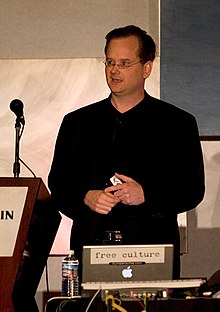From Wikipedia, the free encyclopedia
Neo-feudalism or new feudalism is a theorized contemporary rebirth of policies of governance, economy, and public life, reminiscent of those which were present in many feudal
societies. Such aspects include, but are not limited to: Unequal rights
and legal protections for common people and for nobility, dominance of societies by a small and powerful elite, a lack of social mobility, and relations of lordship and serfdom between the elite and the people, where the former are rich and the latter poor.
Use and etymology
Generally, the term refers to a 21st century form of feudalism—akin in some respects to what was seen in Medieval Europe,
but unfolding as an emerging phenomenon in modern times. In its early
use, the term was deployed as both a criticism of the political Left and of the Right.
On the other hand, Jürgen Habermas used the term Refeudalisierung ("refeudalisation") in his 1962 The Structural Transformation of the Public Sphere to criticise the privatisation of the forms of communication that he believed had produced an Enlightenment-era public sphere.
While not talking about "neo-feudalism" as such, later commentators
have noted that these ideas are similar to the idea of neo-feudalism. Correspondingly, in 1992 Immanuel Wallerstein expressed views on global development, listing neo-feudalism among three other variants. By neo-feudalism, Wallerstein referred to autarky regions with a localised hierarchy and hi-tech goods available only for the elite.
Description
The
concept of neo-feudalism may focus on economics, though it is not
limited to it. Among the issues claimed to be associated with the idea
of neo-feudalism in contemporary society, are: class stratification, globalization, neoconservative foreign policy, multinational corporations, and "neo-corporatism".
According to Les Johnston, Clifford Shearing's theoretical approach of neo-feudalism has been influential.
Shearing "use[s] this term in a limited sense to draw attention to the
emergence of domains of mass private property that are 'gated' in a
variety of ways".
Lucia Zedner responds that this use of neo-feudalism is too
limited in scope; Shearing's comparison does not draw parallels with
earlier governance explicitly enough. Zedner prefers more definitive
endorsements.
Neo-feudalism entails an order defined by commercial interests
and administered in large areas, according to Bruce Baker, who argues
that this does not fully describe the extent of cooperation between
state and non-state policing.
The significance of the comparison to feudalism, for Randy Lippert and
Daniel O'Connor, is that corporations have power similar to states'
governance powers.
Similarly, Sighard Neckel has argued that the rise of
financial-market-based capitalism in the later twentieth century has
represented a 'refeudalisation' of the economy.
The widening of the wealth gap,
as poor and marginalized people are excluded from the state's provision
of security, can result in neo-feudalism, argues Marina Caparini, who
says this has already happened in South Africa. Neo-feudalism is made possible by the commodification of policing, and signifies the end of shared citizenship, says Ian Loader.
A primary characteristic of neo-feudalism is that individuals' public
lives are increasingly governed by business corporations, as Martha K.
Huggins finds.
John Braithwaite notes that neo-feudalism brings a different
approach to governance since business corporations, in particular, have
this specialized need for loss reduction.
Author Jonathan Bluestein has written about neo-feudalism as a
feature of social power: economic, political and martial alike. He
defines the neo-feudal sovereigns as those who, while not directly
referred to as lords, aristocrats, kings or emperors, still hold an
equivalent power in a modern sense. That is, people who are not subject
to everyday laws, can create their own laws to an extent, dominate large
markets, employ immense swathes of individuals, have the means to hold a
private military force, wield the economic might equivalent of entire
nations, and own assets, especially real-estate, on a massive scale. In
his books, Bluestein both criticizes this phenomenon, and proposes
social and economic solutions for it.
Being the first to coin the term: techno-capitalist-feudalism, or
TCF for short, political economist, Michel Luc Bellemare, released a
seminal tome on the subject, titled 'Techno-Capitalist-Feudalism', in
early September 2020. Described as the political economy of Scientific
Anarchist-Communism, or structural-anarchism, TCF is a compilation of 15
years of economic research by the author, which began in the mid 2000s.
According to Bellemare, in the book, "the epoch of
techno-capitalist-feudalism is the epoch of totalitarian-capitalism,
whereby the logic of capitalism attains totalitarian dimensions and
authoritarian supremacy". One of the primary characteristics of the age
of techno-capitalist-feudalism, according to Bellemare, is "the
degeneration of the old modern class-system into a post-modern
micro-caste-system, wherein an insurmountable divide and stratum now
exists in-between the "1 percent" and the "99 percent", or more
specifically, the state-finance-corporate-aristocracy and the
workforce/population. Moreover, according to Bellemare, in the dark age
of techno-capitalist-feudalism, "the determination of values, prices,
and wages are no longer based upon the old Marxist notion of socially
necessary labor-time, but rather upon the arbitrary use of force and
influence, namely, through an underlying set of ruling capitalist
power-relations and/or ideologies, which impose by force and influence,
numeric values, prices, and wage-sums upon goods, services, and people,
devoid of any considerations pertaining to labor-time". Ultimately, in
the dark age of techno-capitalist-feudalism, "whatever a capitalist
entity or a set of entities can get away with in the sphere of
production and/or in the marketplace is deemed valid, legitimate, and
normal, regardless of labour-time expenditures". As well, contra Marx,
Bellemare's book argues that, in the dark age of TCF, "workers can be
paid below subsistence levels", wherefore, they must now work a
multiplicity of jobs and more hours in order to make ends meet, which,
in many instances, they cannot do without social assistance. In turn,
according to Bellemare, "in the dark age of TCF, most
machine-technologies are capitalist in origin, meaning, these
technologies are congealed power-relations and/or ideologies that are
impregnated and programmed with capitalist biases". That is, a set of
specific biases that maintain, reproduce, and expand, the power of the
ruling capitalist relations and ideologies, undergirding the overall
system. Thereby, according to Bellemare's book, in the dystopian age of
TCF, "most capitalist machine-technologies are used to maintain,
reproduce, and expand, the divisions in-between the '1 percent' and the
'99 percent', by keeping the '99 percent' predominantly bolted-down upon
the lower-stratums of the system, all the while, keeping the '1
percent' perched atop the upper-stratums of the system, indefinitely. In
sum, in the dark age of TCF, the new aristocracy, that is, the
capitalist oligarchy or the 1 percent, concerns itself first and
foremost with the accumulation of power, control, and capital, as well
as, reproducing hierarchical-stasis by any means necessary". As a
result, for Bellemare, in the dark age of TCF, "the capitalist
aristocracy does not seek to steal units of unpaid labor-time from
workers, but rather, it seeks to influence and control all aspects of
the workers' everyday lives". Thus, the accumulation of power, control,
and capital, orchestrated by the 1 percent, their corporations, and the
State, "is always at the expense of the workforce/population, which
itself, is gradually impoverished, disempowered, and continually
relegated to the margins of the system, namely, the margins of the
techno-capitalist-feudal-edifice, as lowly wage-serfs and/or
debt-serfs".
During the course of the years 2020-2021, Yanis Varoufakis has written and lectured much about his theory concerning neo-feudalism. He posits that traditional capitalism
has evolved into a new feudal-like structure of economies and
societies, which he refers to as 'techno-feudalism'. Varoufakis explains
that unlike in capitalism, feudal economies have the quality of being
dominated by very small groups of people, and predetermine the behaviour
of markets as they see fit. Taking the example of massive online
enterprises such as Facebook, Amazon
and others, Varoufakis noted that such venues are primarily governed by
the whims of single individuals and small teams, and thus are not truly
capitalist markets of free trade, but rather feudal markets of
stringent control.
Others, such as Jeremy Pitt, have raised similar opinions and concerns,
also noting that techno-feudalism threatens freedom of information over
the Internet.
In early September, 2022, Bellemare, has offered a short and
direct critique of 'techno-feudalism', on the grounds that
'techno-feudalism' skews the facts and daily realities of workers,
toiling under the jackboot of totalitarian-capitalism, or more
accurately, the jackboot of "techno-capitalist-feudalism". According to
Bellemare's article, using the term 'techno-feudalism', instead of
“techno-capitalist-feudalism” is a disservice to workers. To drop the
term 'capitalist' from techno-capitalist-feudalism, "only muddies the
clear blue waters of the terminal stage of capitalist development",
namely, the new dawning epoch of totalitarian-capitalism, that is, the
new dystopian dark age of techno-capitalist-feudalism, run-amok.
As Bellemare states, in the article, "just because the old capitalist
bourgeoisie has embraced digital algorithms and invasive surveillance
technologies as its own, and abstracted itself at a higher-level of
socio-economic existence, away from the workforce/population, whereby,
it now appears invisible and increasingly distant from the everyday
lives of workers, does not mean the old capitalist bourgeoisie has
vanished into thin air, or has been usurped by a strictly technological
aristocracy". According to Bellemare's article, "what has happened is
that the old capitalist bourgeoisie has become a
techno-capitalist-feudal-aristocracy, since, the logic of capitalism,
capitalist profit, and capitalist technological innovations continue to
inform and motivate this authoritarian capitalist aristocracy and all
its overlapping networks of large-scale ruling power-blocs". Thereby,
the specter of capitalism haunts 'techno-feudalism', in the sense that
'techno-feudalism', or more accurately, 'techno-capitalist-feudalism',
is the result of "the capital/labor relationship at its most lopsided,
oppressive, and technologically dominating. The capital/labor
relationship continues to hold, since, the logic of capitalism continues
to be the foundation and the fundamental under-girder of this new
economic system". Therefore, within the evolutionary whimper of
'techno-feudalism', "the logic of capitalism is thriving, laughing all
the way to the bank, as the term 'techno-feudalism' only empowers
capitalist supremacy at the expense of workers’ liberation and
self-management".
In popular culture and literature
After the financial crisis of 2007–2008, American technology billionaire Nick Hanauer stated that "our country [i.e. the United States] is rapidly becoming less a capitalist society and more a feudal society". His views were echoed by, amongst others, the Icelandic billionaire Björgólfur Thor Björgólfsson. The idea that the early 21st century boom and bust
in Iceland saw the country returning to feudal structures of power was
also expressed by a range of Icelandic novelists, among them Sigrún Davíðsdóttir in Samhengi hlutanna, Bjarni Bjarnason in Mannorð, Bjarni Harðarson in Sigurðar saga fóts, Böðvar Guðmundsson in Töfrahöllin, and Steinar Bragi in Hálendið: Skáldsaga.
Similar ideas are found in some Anglophone fiction. For example, Frank Herbert's Dune
series of novels is set in the distant future with a neo-feudalistic
galactic empire known as the Imperium. In these novels, after a series
of wars known as the Butlerian Jihad humanity has come to prohibit all kinds of "thinking machine technology", even its simpler forms.
Subsequently, the political balance of power in the Dune Universe
gradually became dominant by a myriad of royal houses, each dominating
one or several planets. Albeit operating in the distant future, the
social and political dynamics of said royal houses are similar in many
respects to those previously seen in medieval times.
In David Brin's near-future science fiction novel Existence, American politicians campaign on legally transitioning the United States into a neo-feudalist society.
In the year 2020, head of the World Economic Forum, Klaus Schwab published a book titled COVID-19: The Great Reset. The book argues that the COVID-19 pandemic
is an opportunity for politicians and governments to change the world's
economies, societies and structures of government, by introducing a
system of "Stakeholder Capitalism", doing so via the guidelines of a
plan known as 'The Great Reset'. Schwab also refers to his goals as "The Fourth Industrial Revolution". Other authors have criticized The Great Reset as being a form of Neo-Feudalism.







